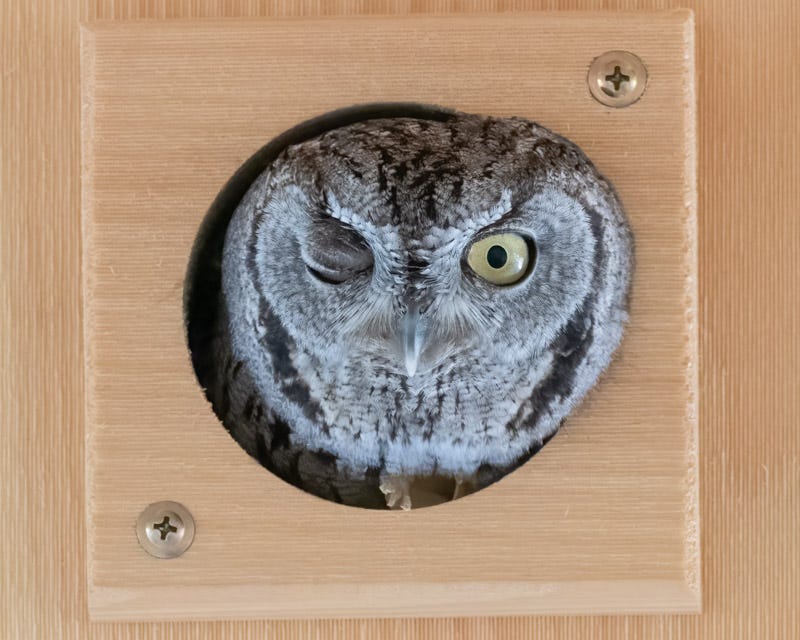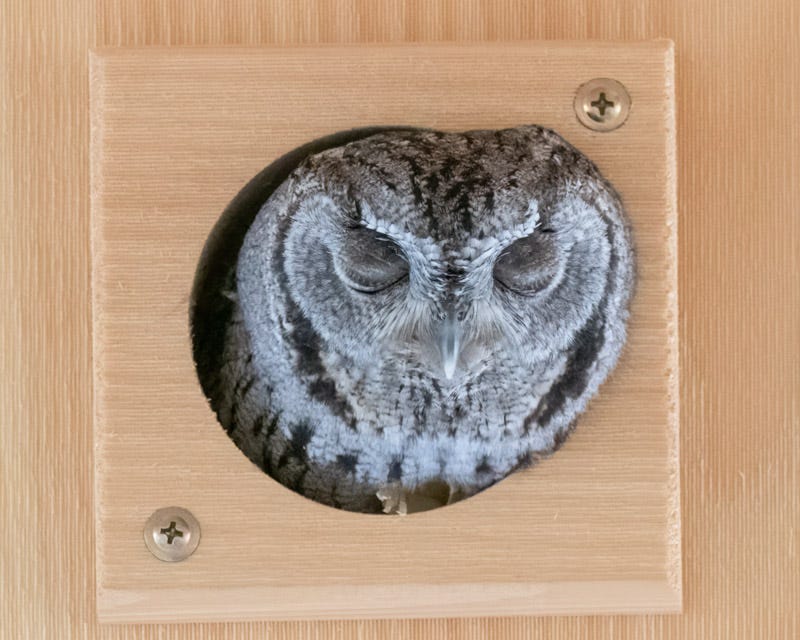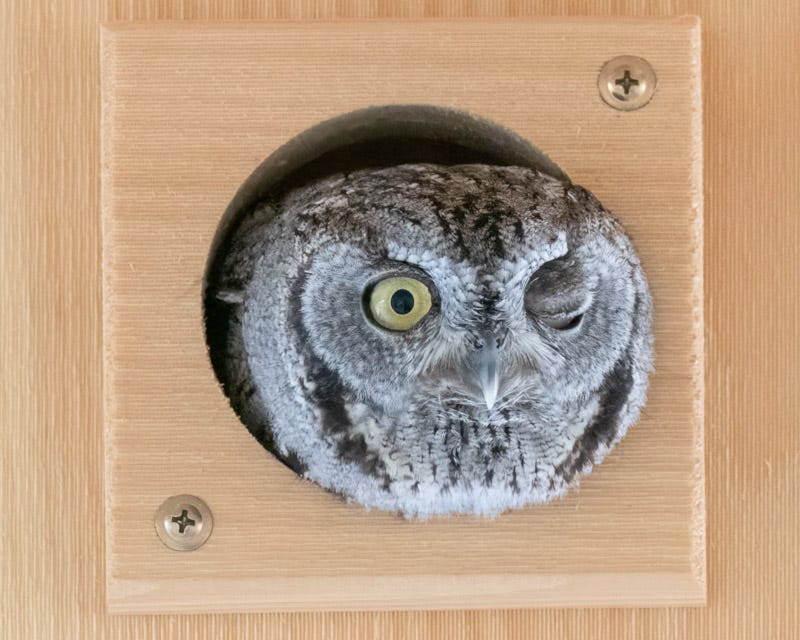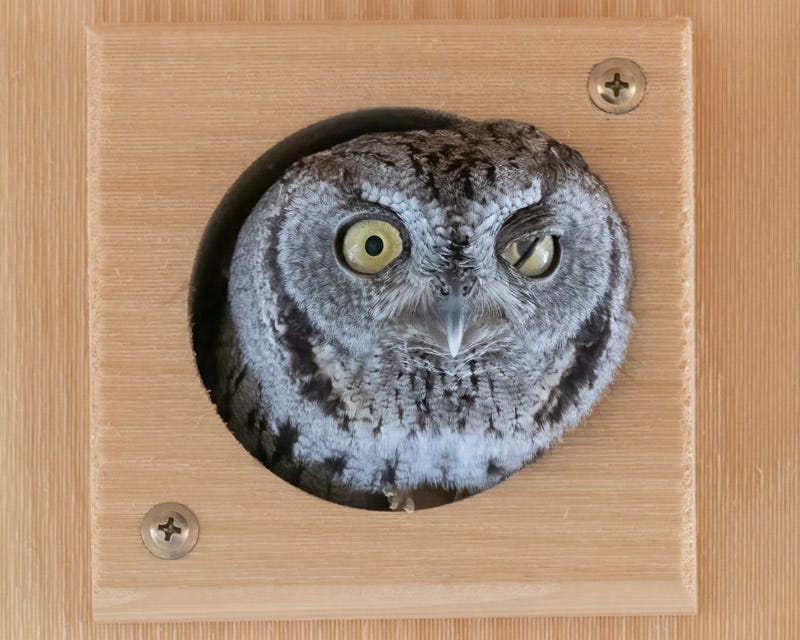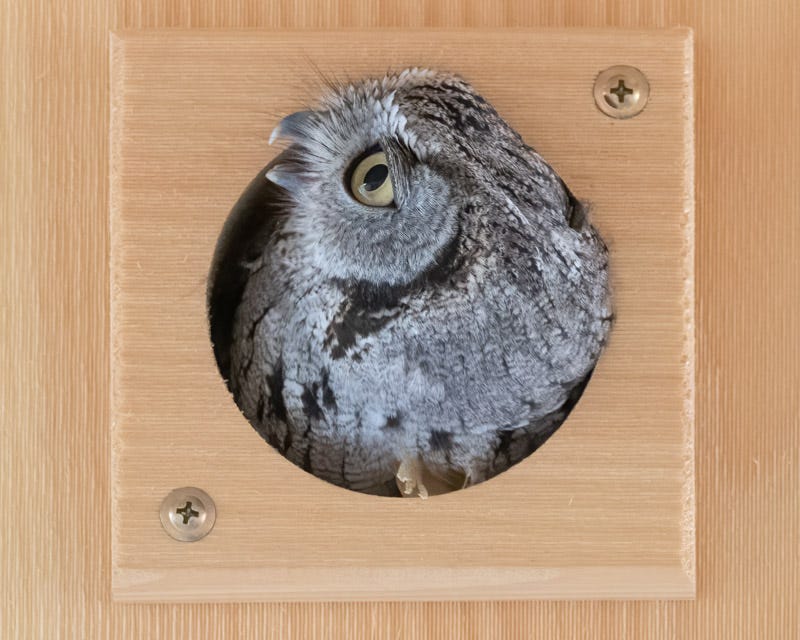A Somewhat Sleepy Screech Owl
In the new nest box on my back porch!!
Two weeks ago I shared that I have a nesting Western Screech Owl in the owl nest box on my back porch. I caught a glimpse or two of her during the day and shared photos with you then.
A few days later, on March 22nd, she poked her head out of the box in the morning and began looking around. She was very "bright-eyed" but every once in a while gave a prolonged blink. Although it really happened "in the blink of an eye", I worked hard to take photos that would capture the moment. She would stare for about 30 seconds, and then blink- sometimes with both eyes, and sometimes with just one eye.
Fortunately for me, cameras now have very quick shutter speeds and settings that gave me the opportunity to capture those moments. It was interesting to learn that whenever the owl closed its eye, it also closed its nictitating membrane. The nictitating membrane is a translucent 'third eyelid'. It is used to protect, much like goggles, as well as to wet the eye while allowing the bird the ability to continue to look out at the world.
When the Western Screech Owl closed its eyes it looked so peaceful. It's interesting to see the slightly fuzzy eyelids on the bird. The opening in this nest box is actually 3 inches wide. It looks as if the owl's head fills out the entire opening. However, the skull of a Western Screech Owl may only be 1.5 inches wide. That means that without feathers her head would only fit halfway across the opening. That shows you how much space the feathers on her head are taking up. Without any feathers on her head, her skull may only be the size of a golf ball in that 3" wide opening.
When it closed both eyes, it also closed both nictitating membranes. You can see that they moved from the inside across to the outside of the eye. The owl's regular eyelids move up and down but the nictitating membrane moves across the eye.
This shot lets you see how cloudy the full membrane is. On one eye, the exposed iris is still yellow but the eye color under the membrane is lighter. The eye that is fully covered is almost ghostly looking.
Birdnote has a short piece that explains those membranes: https://www.birdnote.org/listen/shows/nictitating-membranes-natures-goggles
And then it closed its left eye (on our right side). It was curious about the world around it, but it felt to me that it just couldn't keep its eyes open.
There goes that nictitating membrane again. To see some other birds' nictitating membranes, Birdnote has a photo series for you: https://www.birdnote.org/explore/field-notes/2020/03/natures-goggles-nictitating-membranes
Right before the Western Screech Owl ducked back into the nest box, it suddenly turned and looked upwards. It seems to be staring in amazement but I think it just happened to be holding its beak open while it looked at the ceiling of the porch.
Most days I do not see the owl at all during the daytime. At night, I may see her after sunset as she looks out of her box. I know her evening is just beginning as she'll contact her mate, then leave the box for a short while before returning for the remainder of the night. Although I haven't seen it, I know that the male will bring provisions throughout the night for her. It should be a few more weeks until the eggs hatch. To be continued.......



